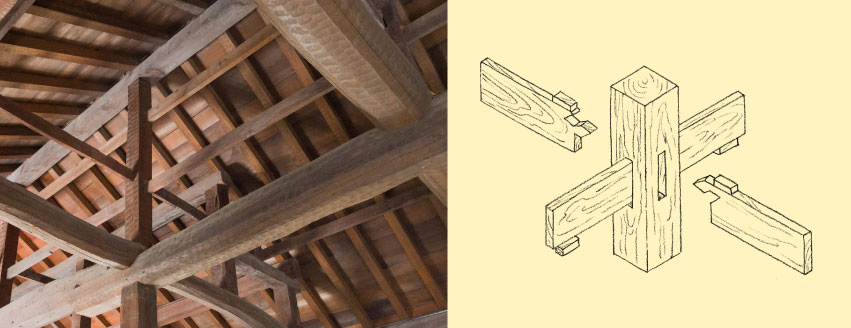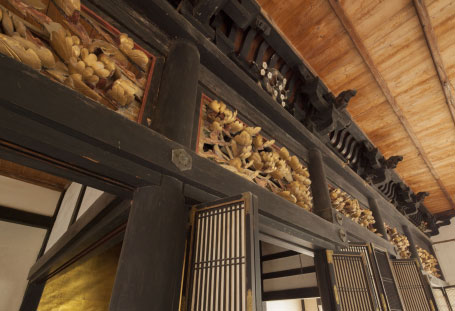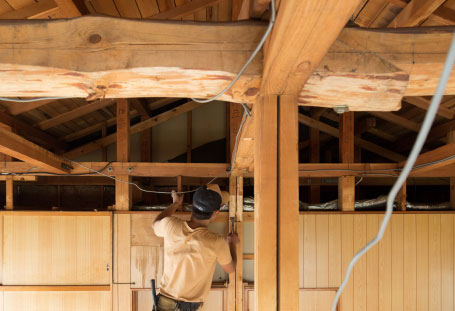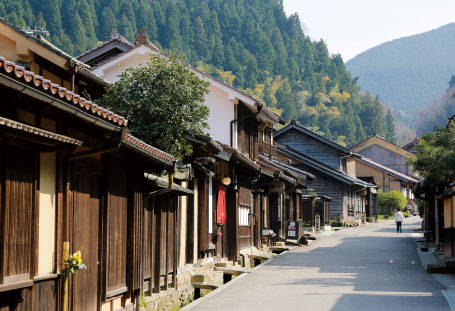What is “解く-TOKU”?
In Shimane Prefecture, the term “toku” is used to mean disassembling a building. As this term implies, traditional Japanese architecture is built without using metal fasteners, instead, wood is assembled like a puzzle. This allows buildings to be disassembled and rebuilt, embodying a form of sustainable architecture.
This unique Japanese building technique has been declining due to rapid lifestyle changes brought by modernization. Additionally, with the population decline, many old buildings have become vacant, and the passing down of these techniques are at risk of being lost.
This project is named “Toku” to symbolize sustainable architecture. Its goal is to preserve traditional buildings and the inherent Japanese values, restore the circulation of these techniques, and contribute to regional development.
PROJECT TOKU

Why can it be disassembled and reused?

Built without nails, using wedges, assembled like a puzzle.
Traditional Japanese architecture employs a technique where wooden pieces are joined using wedges, assembled like a puzzle to form a stable structure. This allows for disassembly and reuse without damaging the wood, unlike methods that use nails.
Additionally, large beams and other structural elements are often used in their natural shapes, making them valuable and suitable for reuse.
Services to restore the cycle
Depending on the condition of the vacant old building, we have developed two services to create a system where materials and techniques can circulate.
❶Buildings that are too dilapidated to be used as a structure.
From these non-reusable old buildings, we salvage valuable timber and architectural parts. The wood is processed into building materials or furniture and actively used in relocation or renovation. We also offer matching services for those in need.
❷Reusable old houses
We collect information on reusable old buildings, create a “Vacant building Data Bank,” and widely provide information to those interested in Japanese culture and architecture.. We offer services for relocation and renovation of these buildings.

Mission
Restoring the cycle of sustainable architecture from three perspectives to pass down Japanese culture to the next generation:

1.Save traditional buildings
Ideally, traditional buildings should be utilized locally, but to save them from the current situation of having no one to take them and deteriorating, we prioritize preservation as cultural assets by disassembling, renovating, relocating, and using them as materials

2.Inherit traditional techniques and values
In Japan, the disappearance of traditional buildings also threatens the techniques needed to maintain and create them, along with their underlying values. We aim to create opportunities to use these traditional techniques through the reuse of buildings, thus inheriting both the skills and values.

3.Contribute to regional revitalization and the maintenance/development of townscapes
By converting vacant buildings into resources, we create jobs and contribute to regional revitalization. Creating attractive jobs and encouraging young people to stay in the area helps maintain existing settlements and townscapes, leading to the true inheritance and development of Japanese culture.。
